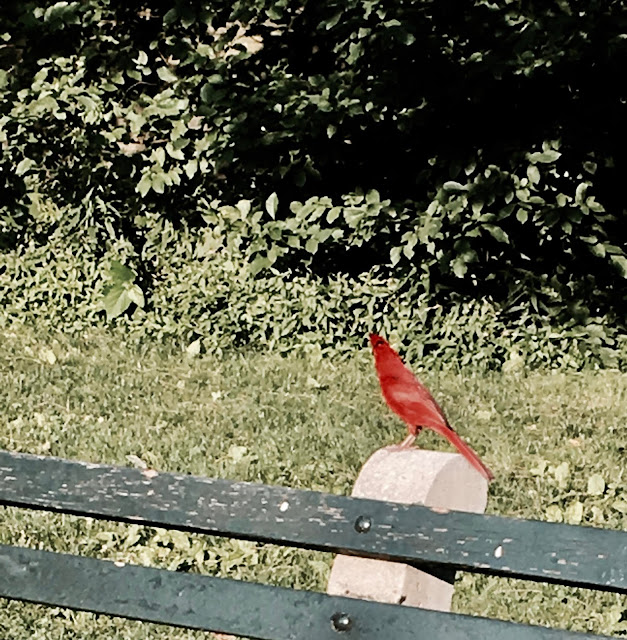June 4th 2019
A busload of MNS members visited the TVS factory in Hosur on a day trip which began at 4am and ended close to 9pm. We went to see a great example of ecosystem restoration, being done by our MNS member Preston, along with of course the active support of the TVS management.
We were not allowed to take photographs in there, but this report below from August 2019 sums it up.
Liffy Thomas
A flock of painted storks is perched on a tamarind tree on an island in a waterbody. Barely 100 metres away, people wearing work flannels sit on a lawn, sip coffee and enjoy their morning break. This tamarind tree is part of what employees at the Hosur factory of TVS Motor Company call “bird park”. Considerably green, it is filled with the twitter of birds. There should easily be 20 bird species in the area this morning and some of the employees are so familiar with their calls that they don’t have to look up to tell which one is around.
The factory is spread over 320 acres, and 50 acres of it make up its green belt. Rainwater from the rooftops of the buildings on the campus are channelled to the 10 waterbodies, that together account for three to four acres that draw resident birds, and during the migratory season, many species from elsewhere. There are also a few animals and reptiles to watch.
The “forest” in the factory is maintained under the supervision of Preston Ahimaz, forest consultant with the company. Ahimaz is assisted by a 10-member team, which includes a naturalist.
Farm land to bird sanctuary
Although this manufacturing plant has been functioning since 1979, the exercise to improve the biodiversity on its green tracts began in 1994. Until then, the sprawling acres were farmlands attracting some native birds, and even animals. The decision to leave a huge space for birds and animals was part of a larger commitment by the company to promoting biodiversity, something that chairman Venu Srinivasan has taken great pains to honour in many of the group’s factories.
“At all our factories, including in Mysore, Hosur and Himachal Pradesh, 30% of the space is reserved for greenery, much of which is wild forest,” says P Venkatesan, vice-president — civil. Ahimaz points out that a leopard was spotted recently at the Mysore plant.
He is disappointed at not seeing enough pelicans on this waterbody. Besides the spot-billed pelicans, purple swamphens, common coots, spot-billed ducks and darters are found in good numbers in the factory. The Eurasian spoonbill and green sandpiper are among birds that arrive during the migratory season.
“Pelicans need a runway to land and breed, probably [that is] why they are not coming in large numbers. So, we are creating another waterbody, much bigger than others on the campus,” says Ahimaz.
Encouraging breeding
Special efforts have been taken to encourage birds to breed at this park, and this includes basket-like enclosures for pelicans, nesting boxes for sparrows and separate platforms on the water. The north-eastern section of the campus is for water birds, and the south-eastern section attracts egrets in large numbers. “We provide them a secure place, but they choose their comfort zone,” says Ahimaz.
Going by their increasing numbers, the guests are liking their stay. Around three years ago, D Prakalathan, the in-house naturalist, who walks around with a camera and a notebook, documented 90 species and 30 butterflies. Now, their count has increased to 125 species and 60 butterflies.
Protection for snakes
“In a day, I record 20 to 30 species,” says Prakalathan, who was previously with the Adyar Eco Park in Chennai. Nineteen species of snakes have been documented. It’s an unwritten rule at the factory that on the campus, no snakes can be killed. All the security staff are trained in handling snakes. “Anti-perforation shoes (something similar to a wicket-keeper’s pads) that can ensure protection against snake bites, are provided to those who go on rounds,” says Ahimaz. If there is oil leakage or anything that can pollute this clean environment, employees are the first to alert the forest team.
A busload of MNS members visited the TVS factory in Hosur on a day trip which began at 4am and ended close to 9pm. We went to see a great example of ecosystem restoration, being done by our MNS member Preston, along with of course the active support of the TVS management.
We were not allowed to take photographs in there, but this report below from August 2019 sums it up.
TVS factory in Hosur hosts a large number of birds
The factory is spread over 320 acres, and 50 acres of it make up its green beltLiffy Thomas
A flock of painted storks is perched on a tamarind tree on an island in a waterbody. Barely 100 metres away, people wearing work flannels sit on a lawn, sip coffee and enjoy their morning break. This tamarind tree is part of what employees at the Hosur factory of TVS Motor Company call “bird park”. Considerably green, it is filled with the twitter of birds. There should easily be 20 bird species in the area this morning and some of the employees are so familiar with their calls that they don’t have to look up to tell which one is around.
The factory is spread over 320 acres, and 50 acres of it make up its green belt. Rainwater from the rooftops of the buildings on the campus are channelled to the 10 waterbodies, that together account for three to four acres that draw resident birds, and during the migratory season, many species from elsewhere. There are also a few animals and reptiles to watch.
The “forest” in the factory is maintained under the supervision of Preston Ahimaz, forest consultant with the company. Ahimaz is assisted by a 10-member team, which includes a naturalist.
Farm land to bird sanctuary
Although this manufacturing plant has been functioning since 1979, the exercise to improve the biodiversity on its green tracts began in 1994. Until then, the sprawling acres were farmlands attracting some native birds, and even animals. The decision to leave a huge space for birds and animals was part of a larger commitment by the company to promoting biodiversity, something that chairman Venu Srinivasan has taken great pains to honour in many of the group’s factories.
“At all our factories, including in Mysore, Hosur and Himachal Pradesh, 30% of the space is reserved for greenery, much of which is wild forest,” says P Venkatesan, vice-president — civil. Ahimaz points out that a leopard was spotted recently at the Mysore plant.
He is disappointed at not seeing enough pelicans on this waterbody. Besides the spot-billed pelicans, purple swamphens, common coots, spot-billed ducks and darters are found in good numbers in the factory. The Eurasian spoonbill and green sandpiper are among birds that arrive during the migratory season.
“Pelicans need a runway to land and breed, probably [that is] why they are not coming in large numbers. So, we are creating another waterbody, much bigger than others on the campus,” says Ahimaz.
Encouraging breeding
Special efforts have been taken to encourage birds to breed at this park, and this includes basket-like enclosures for pelicans, nesting boxes for sparrows and separate platforms on the water. The north-eastern section of the campus is for water birds, and the south-eastern section attracts egrets in large numbers. “We provide them a secure place, but they choose their comfort zone,” says Ahimaz.
Going by their increasing numbers, the guests are liking their stay. Around three years ago, D Prakalathan, the in-house naturalist, who walks around with a camera and a notebook, documented 90 species and 30 butterflies. Now, their count has increased to 125 species and 60 butterflies.
Protection for snakes
“In a day, I record 20 to 30 species,” says Prakalathan, who was previously with the Adyar Eco Park in Chennai. Nineteen species of snakes have been documented. It’s an unwritten rule at the factory that on the campus, no snakes can be killed. All the security staff are trained in handling snakes. “Anti-perforation shoes (something similar to a wicket-keeper’s pads) that can ensure protection against snake bites, are provided to those who go on rounds,” says Ahimaz. If there is oil leakage or anything that can pollute this clean environment, employees are the first to alert the forest team.















































